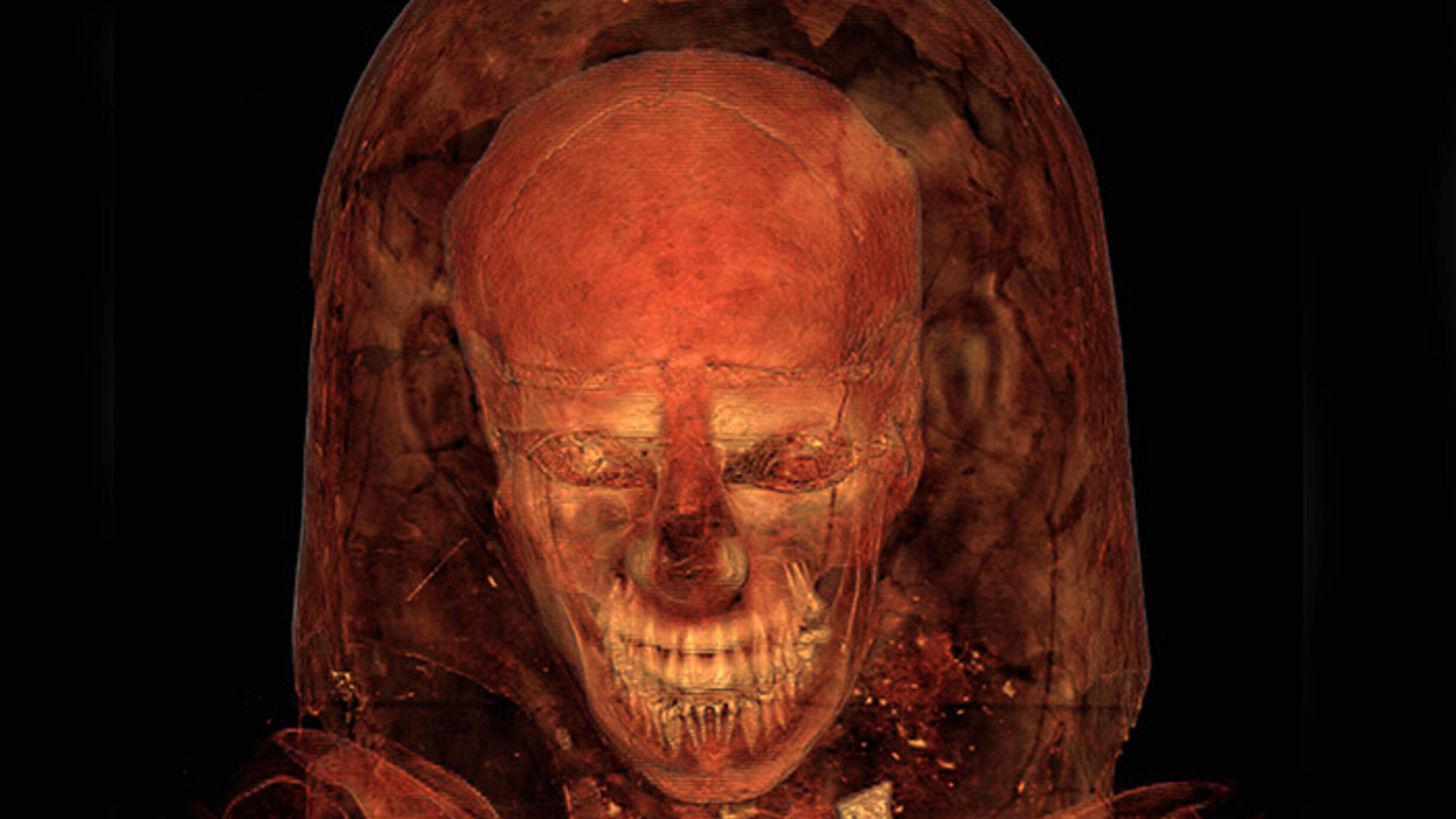Mummies Revealed
Part of the Mummies exhibition.
 CT scan of mummy #30007.
CT scan of mummy #30007.© The Field Museum
As new technologies emerge, scientists reexamine museum collections, which often yield new information. Today, new imaging technologies are helping researchers to see inside these centuries-old specimens without damaging them. In Mummies, see the latest research and find out what cutting-edge science can tell us about these individuals—including mummy #30007, also known as the Gilded Lady.
© 2015 The Field Museum, A115214d_016A, photographer John Weinstein
This beautifully preserved mummy with intricate linen bindings, a gilded headdress, and painted facial features is from Roman-era Egypt (30 BC–AD 646). Still never unwrapped since she was carefully preserved, this mummy's inner secrets remained hidden until examined by computerized tomography (CT) scanning in 2011.
CT scanning of The Field Museum’s mummies rendered extremely detailed views of bones, muscles, and even the hair of the persons inside their wrappings and coffins. This image of mummy #30007’s skeleton was composed by putting together thousands of “slices” of images of only bones, no tissue.
© 2015 The Field Museum, A115214d_030A, photographer John Weinstein; CT scan composite © 2015 Field Museum, Katarina Kaspari
The headdress is made of cartonnage, a papier-mâché like substance made from glued layers of papyrus or linen, then covered with gilding, a thin layer of gold. Ancient Egyptians believed the gold would enable the person’s eyes, nose, and mouth to stay intact for the afterlife. The golden skin was used to show divinity because after death, she would be transformed into the god Osiris, who had skin of gold.
CT scanning of mummy #30007 revealed that she was a woman in her forties with curly hair and a slight overbite. It also uncovered evidence that she may have died from tuberculosis, a common and frequently deadly ailment in ancient Egypt.
© The Field Museum
This hyper-realistic sculpture, created by forensic artist Élisabeth Daynès, portrays the woman behind the gilded mask as she may have looked during her life in ancient Egypt.
© 2012. Photo: E. Daynès–Reconstruction Élisabeth Daynès Paris
Check out more of the exhibition—visit Mummies in Peru.
Lead video: Courtesy of the Field Museum
Read more about